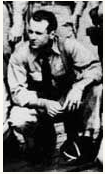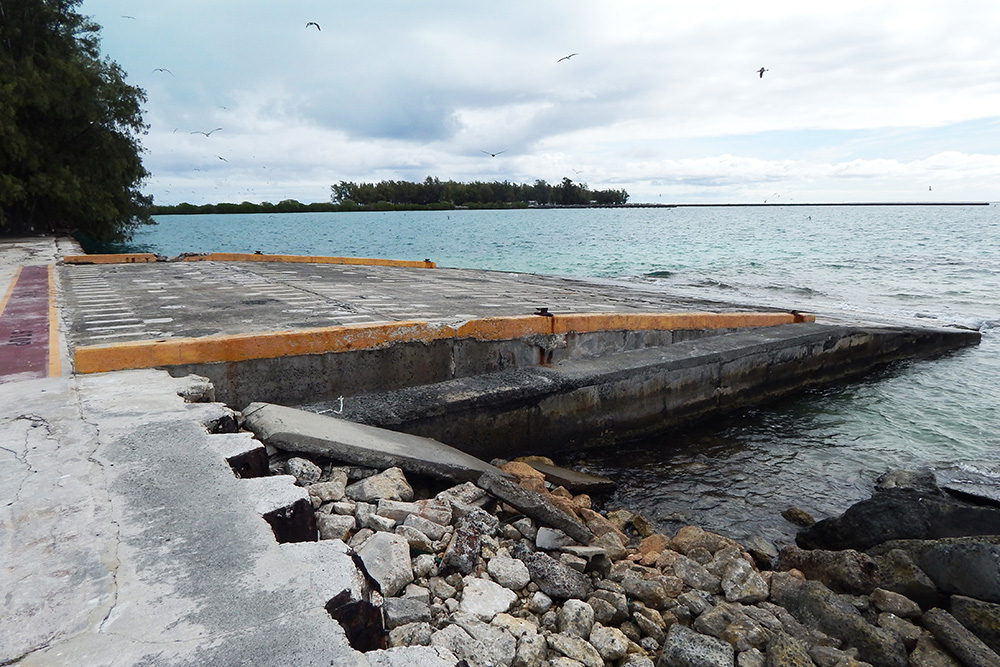Abercrombie, William Warner
- Date of birth:
- July 24th, 1914 (Medford/Oregon, United States)
- Date of death:
- June 4th, 1942 (over Midway Atoll, Pacific ocean)
- Mentioned on:
- United States Memorial for the Missing Honolulu
- Service number:
- 0-250668
- Nationality:
- American (1776 - present, Republic)
Biography
Abercrombie enlisted in the Naval Reserve as a seaman 2nd class at Kansas City, Kansas, on 27 August 1940. After undergoing elimination flight training at the Naval Reserve Aviation Base, Kansas City, from 16 September to 5 October, Abercrombie received an honorable discharge the day before Christmas, 1940, to accept an appointment as an aviation cadet, USNR, on 27 December. Three days later, the fledgling flyer arrived at the Naval Air Station (NAS), Pensacola, to begin his formal flight training.
Abercrombie underwent further instruction at Naval Air Station Miami, before he won his wings on 10 July 1941. Shortly thereafter, after receiving his ensign's stripe on 4 August 1941, he arrived at NAS, Norfolk, for temporary duty. There he joined Torpedo Squadron 8 (or VT-8), established at NAS, Norfolk, on 2 September 1941 under the command of Lieutenant Commander John C. Waldron.
Comprising part of the air group of the aircraft carrier Hornet (CV-8), VT-1 trained under its veteran commanding officer during the waning weeks of peace. The squadron remained as one unit until February 1942, two months after the Japanese attack on the Pacific Fleet at Pearl Harbor that threw the United States into global war, when it was divided into two groups—one that remained ship-based under Waldron, one that traveled to the Grumman aircraft plant on Long Island to take delivery of new aircraft. Abercrombie—nicknamed "Abbie" by his squadron-mates—remained with the former.
"Torpedo 8" operated from Hornet as the ship sailed from the Atlantic to the Pacific, via the Panama Canal, from February to March. Hornet carried the 16 North American B-25 bombers used in the Doolittle raid toward the Japanese homeland in the spring of 1942. VT-S's Douglas TBD-1 Devastator torpedo planes remained below on the hangar deck, sharing that space with Hornet's dive and scout bombers and fighters—all available deck space on the flight deck being occupied by the planes that would bomb Tokyo and other Japanese cities. Only after Doolittle's men had departed for Japan did Hornet have the ability to launch her planes in her own defense. Later that spring, VT-8 traveled with the ship as she proceeded toward the South Pacific in the company of near-sister Enterprise (CV-6), arriving too late to participate in the Battle of the Coral Sea (4 to 8 May 1942) that began the reversal of Japanese fortunes.
Thus after months of training and patrols, the squadron had yet to carry out a torpedo attack on enemy ships. Late in May, however, after American cryptanalysts had determined that the Japanese intended to attack Midway Island, Hornet and Enterprise, together with their screening ships, proceeded to that key atoll, joined later by Yorktown (CV-5) and her screen.
On the morning of 4 June 1942, Lt. Commander John C. Waldron led 15 TBD-l's, one of them piloted by Abercrombie, launched from Hornet's flight deck. He located the Japanese carrier force and, despite knowing that he lacked fighter cover, led them in on their torpedo runs. "Torpedo 8" pressed home a desperate and gallant attack in the face of Zero fighters and heavy antiaircraft fire, but suffered grievously. All 15 planes were shot down. Of thirty men, only Ensign George H. Gay, Jr., USNR, survived. For his part, Ensign Abercrombie posthumously received a Navy Cross and a share of VT-8's Presidential Unit Citation.
A destroyer escort vessel, the USS Abercrombie (DE 343) has been named to honor Ensign William W. Abercrombie, USNR. The ship was built by the Consolidated Steel Corporation, Orange, Texas, and launched 14 January 1944.
Do you have more information about this person? Inform us!
- Period:
- Second World War (1939-1945)
- Rank:
- Ensign
- Unit:
- Torpedo Squadron 8 (VT-8), U.S.S. Hornet (CV-8), U.S. Navy
- Awarded on:
- June 1942
Posthumously awarded
- Period:
- Second World War (1939-1945)
- Rank:
- Ensign
- Unit:
- Torpedo Squadron 8 (VT-8), U.S.S. Hornet (CV-8), U.S. Navy
- Period:
- Second World War (1939-1945)
- Period:
- Second World War (1939-1945)
- Period:
- Second World War (1939-1945)
- Period:
- Second World War (1939-1945)
- Period:
- Second World War (1939-1945)
- Period:
- Second World War (1939-1945)
Sources
- - Recipients of The Navy Cross, 1916 - Present, by C. Douglas Sterner
- Abercrombie, William Warner
- U.S. Navy Records Search & Veteran Locator | TWS
- A Dawn Like Thunder
- William Abercrombie - Recipient -












